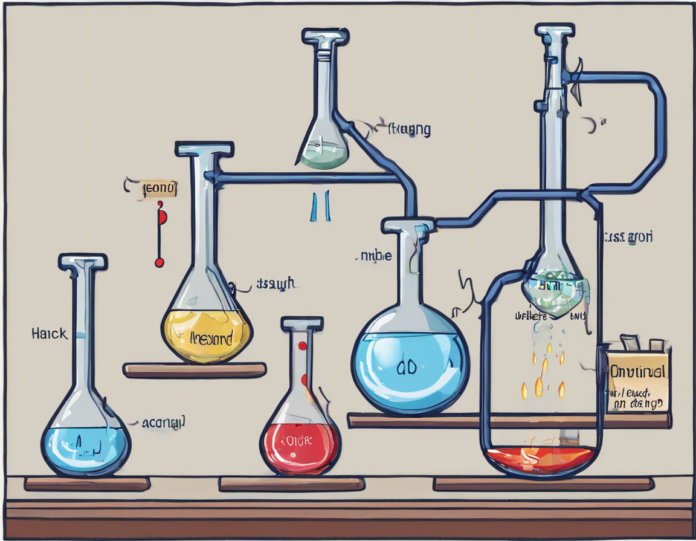In the realm of scientific investigations, changes in matter can be broadly classified as either chemical or physical. While chemical changes involve the alteration of a substance’s chemical composition, physical changes refer to alterations in the substance’s physical properties without changing its chemical makeup. Non-chemical changes, also known as physical changes, are transformations that do not result in the formation of new substances. Understanding the distinctions between chemical and non-chemical changes is crucial for various fields, including chemistry, biology, and physics. This article delves into the key differences between chemical and non-chemical changes, and highlights methods for identifying non-chemical changes in various contexts.
Chemical vs. Non-Chemical Changes: Understanding the Basics
Chemical Changes:
- Definition: Chemical changes, also known as chemical reactions, involve the formation of new substances with different chemical compositions from the original substances.
- Irreversibility: Chemical changes are typically irreversible, meaning it is challenging or impossible to revert the substances back to their original state.
- Energy Changes: Chemical changes often involve the release or absorption of energy in the form of heat or light.
- Indicators: Common indicators of chemical changes include color changes, gas production, formation of a precipitate, temperature changes, and emission of light.
Non-Chemical Changes:
- Definition: Non-chemical changes, or physical changes, encompass alterations in a substance’s physical properties without changing its chemical composition.
- Reversibility: Non-chemical changes are usually reversible, allowing the substances to return to their original states.
- Energy Changes: Non-chemical changes typically do not involve significant energy changes.
- Indicators: Common indicators of non-chemical changes include changes in size, shape, phase (solid, liquid, gas), and state of matter without the formation of new substances.
Identifying Non-Chemical Changes: Methods and Examples
1. Changes in Physical State:
Method: Observing alterations in the state of matter (solid, liquid, gas) without the formation of new substances is a primary indicator of a non-chemical change.
Example: Melting ice cubes, freezing water, and evaporating alcohol are all examples of non-chemical changes as they involve transitions between different physical states without altering the substances’ chemical compositions.
2. Changes in Shape or Size:
Method: Modifications in the shape or size of a substance without chemical reactions indicate non-chemical changes.
Example: Cutting paper into different shapes, breaking a glass bottle into pieces, and inflating a balloon are all instances of non-chemical changes that alter the substance’s appearance without changing its composition.
3. Changes in Temperature:
Method: Monitoring changes in temperature without the formation of new substances can help identify non-chemical changes.
Example: Heating and cooling water, melting wax, and freezing fruits are all examples of non-chemical changes that involve temperature variations without chemical transformations.
4. Changes in Density:
Method: Observing changes in the density of a substance without chemical reactions signifies a non-chemical change.
Example: Mixing oil and water, compressing air, and melting chocolate are all non-chemical changes that alter density without creating new substances.
Distinguishing Between Chemical and Non-Chemical Changes
1. Observing Physical Indicators:
Method: Identifying physical indicators such as changes in color, gas production, formation of a precipitate, and emission of light can help distinguish between chemical and non-chemical changes.
2. Assessing Reversibility:
Method: Determining if the transformation is reversible or irreversible is crucial in distinguishing between chemical and non-chemical changes, as physical changes are usually reversible.
3. Analyzing Energy Changes:
Method: Monitoring energy changes, such as heat release or absorption, can aid in distinguishing chemical changes, which often involve significant energy alterations, from non-chemical changes.
FAQs:
1. Can physical changes be reversed?
Yes, physical changes are typically reversible, meaning substances can return to their original states without altering their chemical compositions.
2. What are some common examples of non-chemical changes?
Common examples of non-chemical changes include melting ice, freezing water, cutting paper, breaking glass, and inflating a balloon.
3. How do you distinguish between chemical and non-chemical changes in laboratory experiments?
Observing physical indicators, assessing reversibility, and analyzing energy changes are key methods for distinguishing between chemical and non-chemical changes in lab settings.
4. Are changes in temperature always indicative of chemical changes?
No, changes in temperature can also occur in non-chemical changes such as melting, freezing, and evaporating substances without chemical transformations.
5. Can substances exhibit both chemical and non-chemical changes simultaneously?
Yes, substances can undergo both chemical and non-chemical changes simultaneously depending on the nature of the transformation and the reactions involved.
6. How do non-chemical changes impact daily life?
Non-chemical changes play a crucial role in various daily activities such as cooking, cleaning, manufacturing, transportation, and personal grooming, influencing how substances interact and transform in practical scenarios.
7. What are some educational experiments to demonstrate non-chemical changes?
Educational experiments like melting ice, boiling water, inflating balloons, dissolving salt in water, and cutting fruits showcase non-chemical changes and their impact on substances’ physical properties.
8. How do non-chemical changes contribute to environmental processes?
Non-chemical changes influence environmental processes such as the water cycle, rock formation, erosion, condensation, and sublimation, showcasing how physical alterations impact natural systems.
9. Can non-chemical changes lead to changes in taste, texture, or appearance of substances?
Yes, non-chemical changes can impact the taste, texture, and appearance of substances through processes like heating, cooling, mixing, separating, and reshaping materials without altering their chemical compositions.
10. Why is it essential to differentiate between chemical and non-chemical changes in scientific investigations?
Distinguishing between chemical and non-chemical changes is critical for understanding how substances interact, transform, and behave in various contexts, aiding in scientific analyses, experiments, and practical applications across disciplines.
